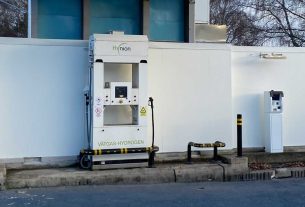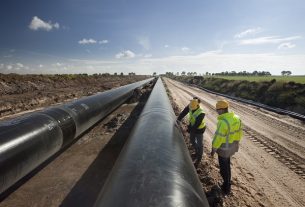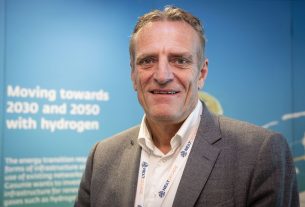The Netherlands – Six significant initiatives have been designated as catalysts for the region’s energy transition in the inaugural Cluster Energy Strategy (CES) Rotterdam-Moerdijk. They are also critical to the national economy and the country’s future earning potential.
A work-group comprised of representatives from Deltalinqs, the province of Zuid Holland, the Port of Moerdijk Authority, Stedin, and the Port of Rotterdam Authority examined the industry’s future energy flows and sustainability plans, with a focus on how to maintain and, if necessary, strengthen Rotterdam-strategic Moerdijk’s position in north-western Europe. Six projects eventually emerged.
Other industry clusters also made a selection, on which agreements will be reached later this year in the Multi-Annual Programme for Infrastructure, Energy, and Climate (MIEK). These essential projects will be developed with priority since they are of national importance and their usage and necessity is undeniable. This process will be coordinated by the National Programme for Infrastructure and Sustainable Industry (PIDI). The PIDI and MIEK are the means by which the government directs our country’s energy transition.
Infrastructure construction
A promptly built infrastructure geared to the future energy transition has several benefits for Rotterdam-Moerdijk, ranging from an energy transition that is in line with the Climate Agreement to keeping the Netherlands’ significant worldwide market position. Any delays in infrastructure construction would be terrible for the region, with 385,000 jobs of vital interest for employment and an economic value of approximately 45.5 billion euros (6.2 percent of GDP).
33 million tonnes of CO2 saved
These projects involve the supply of products and renewable energy carriers, as well as the release of CO2, allowing the industry in the Netherlands and elsewhere to significantly cut emissions. These infrastructural investments could result in a decrease of 33 million tonnes per year.
Outline of the six projects
- The first project concerns a hydrogen backbone through the port area. Local production, imports of huge volumes of hydrogen from other parts of the world, and transit to the hinterland will be integrated with this HyTransPort.RTM pipeline. Future hydrogen demand in north-western Europe is sure to increase and can only be met via imports. Rotterdam’s current strategic role in the predominantly fossil flows can be addressed in the new energy system as well. This project is developed by Gasunie and the Port of Rotterdam Authority.
- Delta Corridor, the second project, focuses on strengthening the infrastructure of Rotterdam via Moerdijk/Geertruidenberg to Geleen and the connection to North Rhine-Westphalia and is therefore a project of international dimensions too. A new pipeline corridor for hydrogen, CO2, LPG, propane, and possibly also direct current and circular raw materials facilitates sustainability projects in Moerdijk, Chemelot and Germany and is a major factor in continuing the position of Rotterdam as the energy hub for north-western Europa.
- The third project is about extra landing of power from offshore wind farms (≥ 2GW) and the plans made by grid operators to create an electricity grid with a higher capacity. This should bring the availability of green power – for green hydrogen production and as a basis for shore-based power and electrification in the process industry, for instance – a great deal closer. The project also involves increasing the capacity in conformity with grid operator investment plans and the vision documents Een haven vol nieuwe energie (‘A port full of new energy’) and the E-Master Plan Moerdijk.
- A fourth project concerns building a main infrastructure for transporting CO2 and for storing it in depleted gas reservoirs under the North Sea: the Porthos project. Porthos is crucial for realising an enormous reduction in industry emissions in the short term.
- The next project on the list is WarmtelinQ, a project of Gasunie and the Port of Rotterdam Authority for building a transport pipeline for heat from the port of Rotterdam to homes, offices, and greenhouse horticulture in the region. Heat from the port can replace natural gas as an energy source, enabling the energy transition in the built environment and greenhouse horticulture.
- The final project, H-vision, concerns the development of plants for producing and transporting low-carbon hydrogen to be used as fuel in the industry. Three product pipelines are planned: for the supply of industrial residual gas as a basis for production, for the discharge of CO2, and for the transport of low-carbon hydrogen to consumers.




